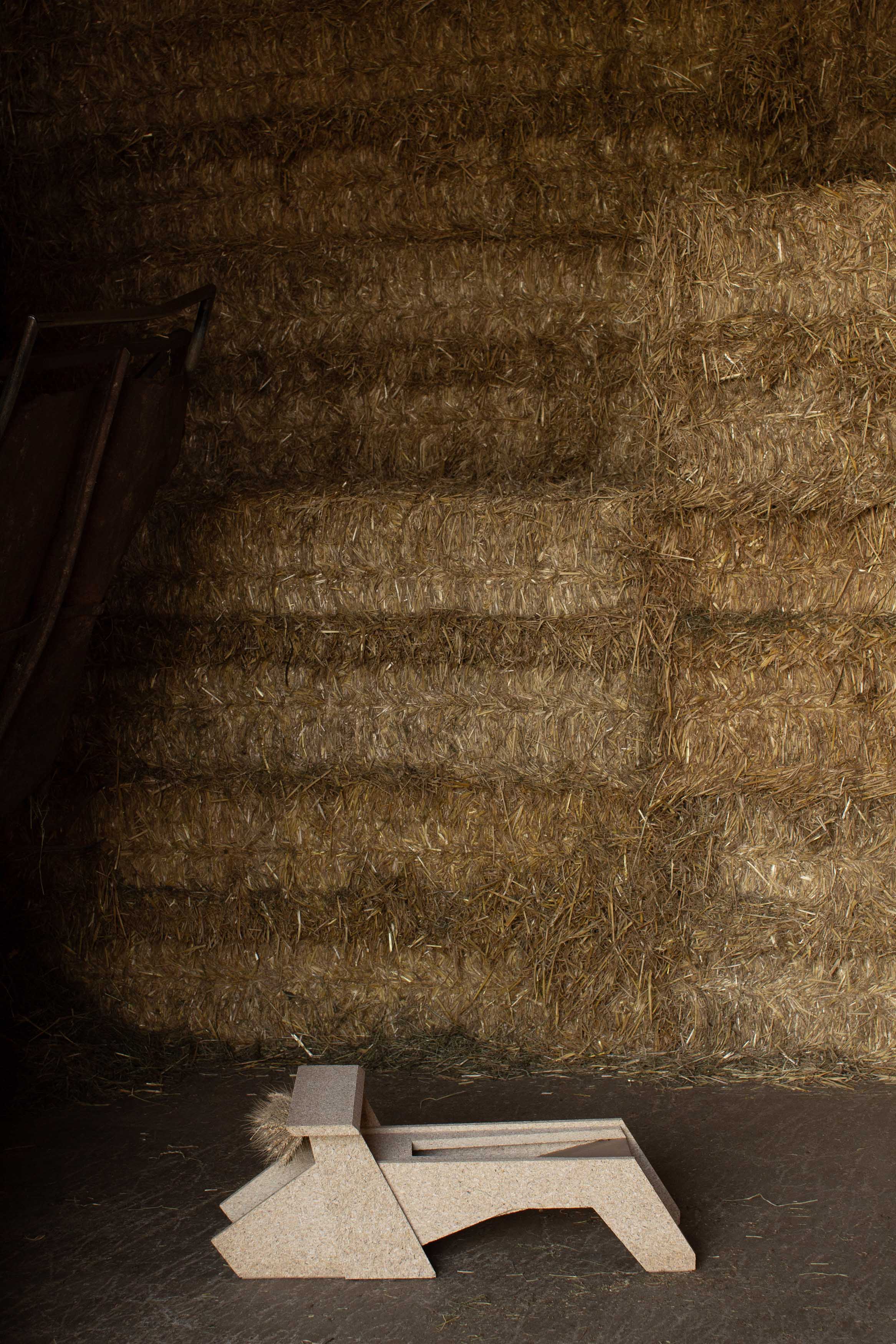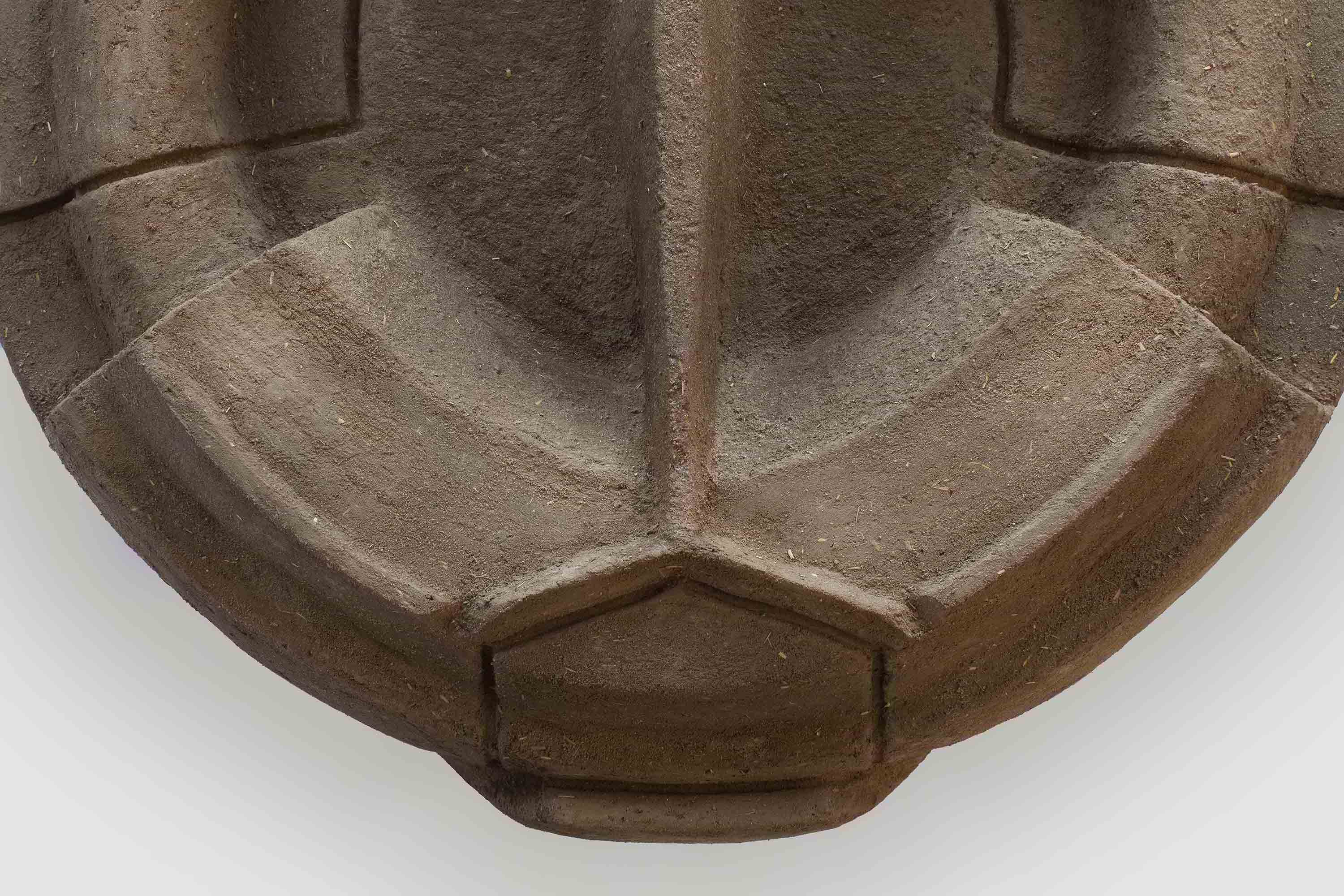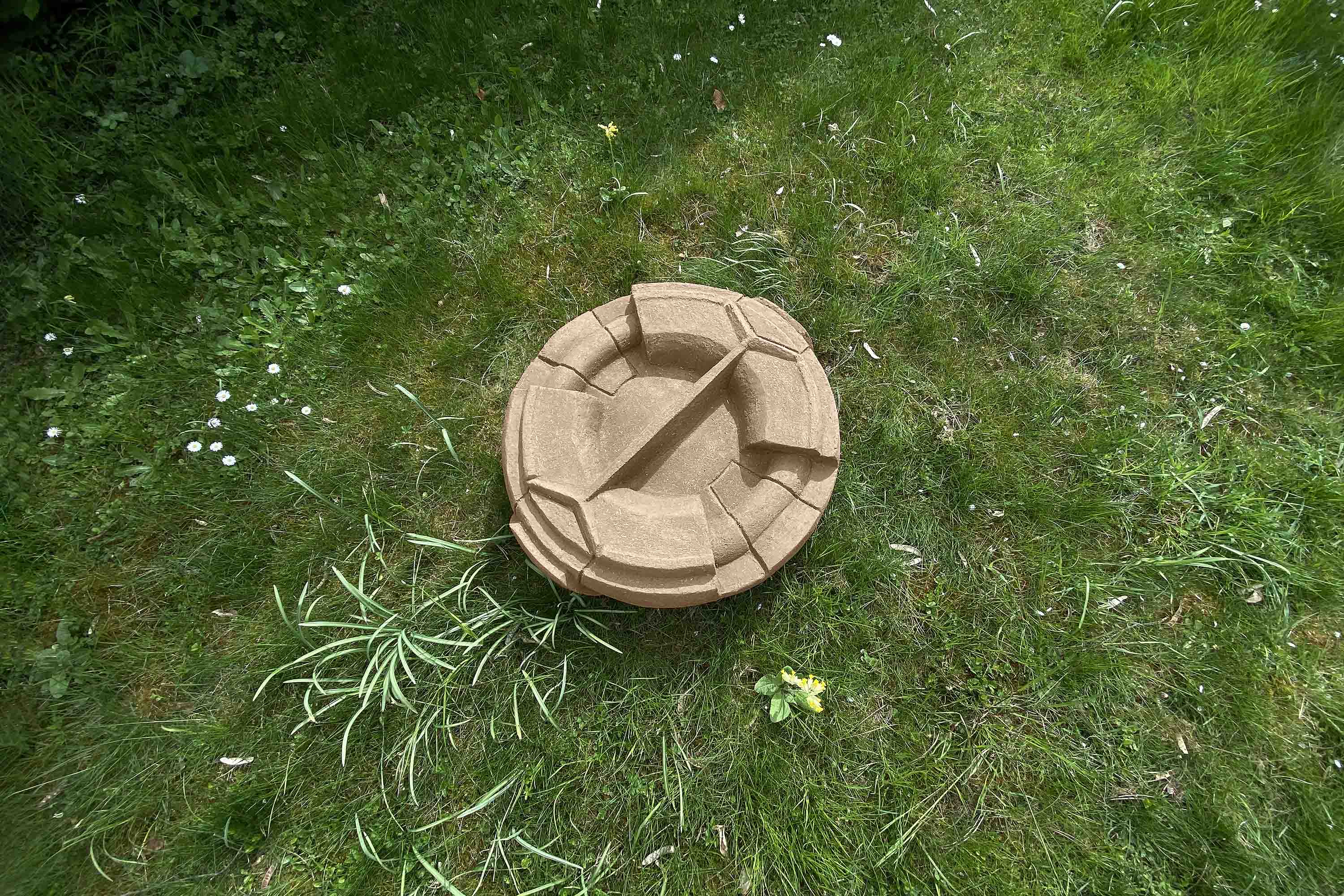

2022 — Hortulanus
![]()
![]()
![]()
![]()
![]()
![]()
![]()
![]()
![]()
![]()
![]()
Hortulanus presents a collection of four objects as an exploration into European indigenous technologies. By looking at resilience in design through nature-centred practices, the project highlights their potential as viable approaches for the future, grounded in their site-specificity. The project was initiated through Creative Industries Fund NL and supported with expertise from the European Center for Earth Building.
Taking its name from the Latin word ‘gardener’ or ‘related to a garden’, Hortulanus embraces maintenance, change, and decay as integral qualities of an object. The work draws on vernacular architectural techniques and transfers them to furniture. The resulting objects are crafted from familiar natural materials, which can be returned to the soil through natural composting processes. The structures are made from straw panels, a newly engineered material made of leftover agricultural straw. Stability is increased through clay plaster, an unfired raw material. Once rehydrated, it can be reshaped or returned to the ground. Details such as bound barley and wheat ears follow traditions associated with European harvest rituals.
Adopting a playful, near-future aesthetic, the objects challenge the visual language long associated with natural materials and ‘green’ vs. ‘high-tech’ design. In doing so, Hortulanus questions whether today’s technologically driven solutions can match the longevity, adaptability, and reliability of their nature-centred alternatives in all cases.
Taking its name from the Latin word ‘gardener’ or ‘related to a garden’, Hortulanus embraces maintenance, change, and decay as integral qualities of an object. The work draws on vernacular architectural techniques and transfers them to furniture. The resulting objects are crafted from familiar natural materials, which can be returned to the soil through natural composting processes. The structures are made from straw panels, a newly engineered material made of leftover agricultural straw. Stability is increased through clay plaster, an unfired raw material. Once rehydrated, it can be reshaped or returned to the ground. Details such as bound barley and wheat ears follow traditions associated with European harvest rituals.
Adopting a playful, near-future aesthetic, the objects challenge the visual language long associated with natural materials and ‘green’ vs. ‘high-tech’ design. In doing so, Hortulanus questions whether today’s technologically driven solutions can match the longevity, adaptability, and reliability of their nature-centred alternatives in all cases.
Design, Concept, ProductionJohanna Seelemann, 2021-2022
Picture CreditsExhibition views by Robert Damisch
SupportCreative Industries Fund NL, Talent Development
Special Thanks toMarie-Luise Jesch, Christoph Born, Europäische Bildungsstätte für Lehmbau, Studio Hahn und Hosemann, Patricia Leister, Sächsischer Landfrauen Verband e.V., Hannelore Krausch, Beerendorfer Landfrauen, Europäische Bildungsstätte für Lehmbau, Felix Krobitzsch, Wachauer Agrar- und Transport GmbH
PrizeGreen Concept Award Winner, Category Interior and Lifestyle, 2022
Exhibitions︎︎︎ ‘Farm’, Hofgut Rimpertsweiler, Lake Constance, 21 July - 29 September 2023
Johanna Seelemann, 2021-2022
Picture CreditsExhibition views by Robert Damisch
Other pictures by Johanna Seelemann
SupportCreative Industries Fund NL, Talent Development
Special Thanks toMarie-Luise Jesch, Christoph Born, Europäische Bildungsstätte für Lehmbau, Studio Hahn und Hosemann, Patricia Leister, Sächsischer Landfrauen Verband e.V., Hannelore Krausch, Beerendorfer Landfrauen, Europäische Bildungsstätte für Lehmbau, Felix Krobitzsch, Wachauer Agrar- und Transport GmbH
PrizeGreen Concept Award Winner, Category Interior and Lifestyle, 2022
Exhibitions︎︎︎ ‘Farm’, Hofgut Rimpertsweiler, Lake Constance, 21 July - 29 September 2023
︎︎︎ ‘Hortulanus’, re:future Lab, Berlin, 14 September - 5 November 2022
︎︎︎ ‘Slow Life’, Finemateria, Piazza Città di Lombardia, Salone del Mobile, Milan, June 2022
︎︎︎ ‘Escapism’ Collectible Fair Curated Section, Berry Dijkstra, Brussels, May 2022
︎︎︎ ‘The Circle’, with Dutch Invertuals, hosted by MAKK - Museum for Applied Arts, Cologne, Jan-April 2022
︎︎︎ ‘Objects for a New Kind of Society’, hosted by Dutch Invertuals and The Future Laboratory, Eindhoven, 2021
︎︎︎ ‘Werkschau’, Industriemuseum, Chemnitz, 2023










